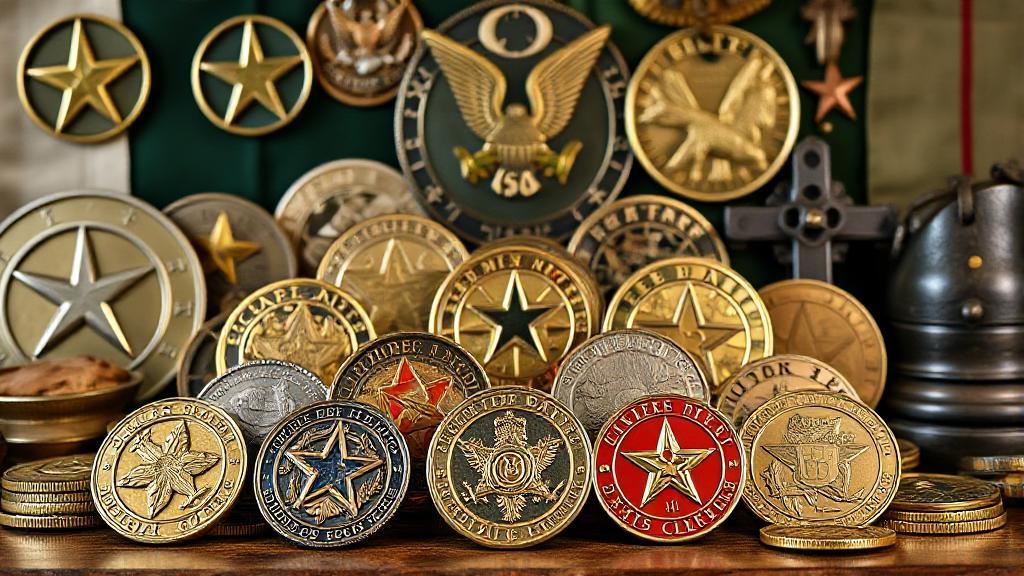Introduction to Challenge Coins
Challenge coins are small, coin-like medallions that carry significant meaning and history. While primarily associated with military organizations, their use has expanded to various groups worldwide. These coins symbolize camaraderie, achievement, and identity, serving as powerful tokens of belonging and recognition.
Origins and History
The most widely accepted origin story traces back to World War I, when a wealthy American lieutenant ordered bronze medallions for his unit members. One young pilot wore his medallion in a leather pouch around his neck. After being shot down and captured by German forces, he escaped to France where local partisans initially suspected him of being a spy. The medallion ultimately proved his identity and saved his life.
Another theory suggests that challenge coins originated in ancient Rome, where soldiers were rewarded with coins for their achievements in battle. These coins were often marked with the insignia of the legion, serving as a token of honor and recognition.
Modern Military Usage and Purpose
In today's military, challenge coins serve multiple purposes:
- Recognition of service
- Commemoration of special events
- Unit identification
- Morale building
- Awards for exceptional performance
Military leaders, from unit commanders to Presidents serving as Commander-in-Chief, often present their personal challenge coins to service members in recognition of outstanding achievements or memorable encounters.
The Challenge Tradition
The "challenge" aspect of these coins emerged from a tradition that continues today:
- A challenger initiates by showing their coin
- Everyone present must produce their coins
- Anyone without their coin must buy drinks for the group
- If everyone has their coin, the challenger buys
"The challenge is a way to ensure that members always carry their unit's coin, a symbol of pride and brotherhood." - Military Traditions Quarterly
Beyond the Military
While their roots are in the military, challenge coins have expanded to various organizations:
Law Enforcement
Police departments, federal agencies, and first responders have embraced challenge coins to foster unity and commemorate significant events.
Corporate World
Many companies have adopted challenge coins for:
- Employee recognition
- Team building
- Marketing promotions
- Corporate milestones
Collecting Community
A vibrant collecting community has emerged, with rare coins fetching significant prices on sites like eBay and specialized collecting forums.
Design Elements and Materials
The design of a challenge coin can be as unique as the organization it represents. Common elements include:
- Emblems and Insignias: Often featuring the logo or emblem of the organization
- Mottos and Slogans: Words that capture the spirit or mission of the group
- Colors and Materials: Choices that reflect the identity and values of the organization
Most coins are crafted from:
- Brass
- Copper
- Nickel
- Silver (for special editions)
Preservation and Display
Many collectors use specialized display cases available from manufacturers like Challenge Coin Display to showcase their collections while protecting them from environmental damage.
For those interested in creating custom challenge coins, there are numerous companies that specialize in their design and production. You can explore options and get inspiration from this guide.
Cultural Impact and Significance
Challenge coins represent more than mere medallions; they embody stories, achievements, and connections between people who share common experiences. For many, they hold personal significance as reminders of experiences, friendships, and achievements. The stories behind each coin can be deeply personal, making them cherished keepsakes.
The evolution of challenge coins from military tradition to widespread cultural phenomenon demonstrates their enduring appeal as symbols of belonging, achievement, and shared experience. Whether carried by service members, first responders, or corporate teams, these small tokens continue to forge connections and preserve memories for generations to come.
